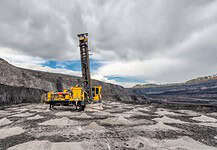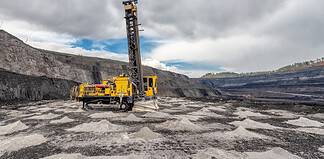Australia’s mines pose some of the most challenging, toughest workplace scenarios for vehicles, and so they must be equally tough to a scale not seen in any other industry.
MINESITES would grind to a halt if it were not for 4WD light vehicles.
And the people operating those vehicles must be suitably qualified.
Driver incompetence has been a leading cause of 4WD accidents on site, but this can easily be rectified with driver training.
Accidents on a minesite are in the public eye more than ever, and mine operators come under more scrutiny than just about any other industry.
Each mine operator will have a specific set of rules that govern the way vehicles operate onsite, and will have a list of required modifications that ensure the vehicles are fit for purpose: what is known as Min-Spec.
Standard 4WDs are customised with aftermarket parts that increase the safety, visibility, performance and function of the vehicles.
Mine specifications will vary significantly from site to site and will cover all aspects of a vehicle’s safety, function and performance while on a mine.
At a base level, there will be roll protection, visibility enhancement, bull-bar, fire extinguisher, in-vehicle monitoring, GPS tracking and a VHF radio, to name a few.
The requirements placed on vehicles are varied and complex, but what is often overlooked is the importance of correct training for the workers driving those vehicles on a daily basis.
There is not a specialised licence required to drive off-road, even though there are many technical aspects to four-wheel-driving that are understood by those “in the know”.
Andre Botha from the South African National Offroad Trainers Association (SONTA) had some practical tips for anyone operating an offroad vehicle on site.
Hand position is a simple consideration that could prevent potentially hazardous situations, he said.
Thumbs should never be placed inside the steering wheel.
If a worker drives over a large pothole or rut, the wheel can suddenly jerk which can dislocate and even break if inside the rim.
This is something that should be second nature to anyone operating a 4WD.
When breaking before a pothole or rut, often the brakes are applied with force.
This means that the front suspension is often compressed, using up the suspension travel.
If it becomes impossible to stop before impact with the pothole or rut, Mr Botha recommended releasing the brakes just prior to impact.
“This will allow the front suspension to return to its normal height and give more suspension travel when hitting the obstacle,” he said.
And it is important to know the limitations of a vehicle.
4WDs cannot be treated like a regular car when it comes to cornering at speed.
They are top-heavy and will roll over much easier than a car while cornering if driven too fast.
Mr Botha said that this applied to both gravel and paved roads.
“Although a 4WD vehicle generally has better traction on gravel than a car, when safe cornering speeds are exceeded the 4WD will tend to roll earlier than a car,” he said.
Similarly, it is important to know the position of the front and rear differentials, as they are usually the lowest ground clearance point of a vehicle.
Any other low ground clearance points should be noted such as the exhaust or spare tyre.
This way, when a large rock or obstacle must be negotiated, they can ensure they do not drive directly over it with the lowest ground clearance point of the vehicle.
Mr Botha said that it is important that drivers are always driving within their ability, and that taking a slower, more considered approach was often necessary to avoid potential accidents.
“If you have a ground clearance deficiency, going slow helps here, in that, if you do hit a rock with the differential or other rock grabber, it will usually stop the vehicle on impact or you will lightly scrape over it,” he said.
“If you were going too fast and hit a rock or other obstacle, it could knock a hole in the oil pan, differential, or even knock off the oil filter.
“Always drive straight down hills or steep terrain.
“Know your approach and departure angles, the bumper to tyre distance.
“Some trails will require off-camber driving.
“In situations like this it’s best to go slow, keeping the tyres in the tracks.
“Make every attempt to avoid losing attention and ascending up a rock or stump on the up side of the hill.
“Trucks will tend to slide sideways before rolling over – the tyres will slip sideways a little.
“Stop if the slide puts you off the edge of the track. If it is clear downhill and a rollover is imminent, immediately turn the vehicle into the slide and drive it down.
“If that is not an option, and you are going over, turn the vehicle off and hold on to your seat-bottom while hoping that the seat belt works properly.”








































